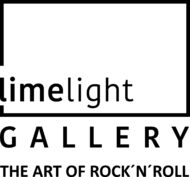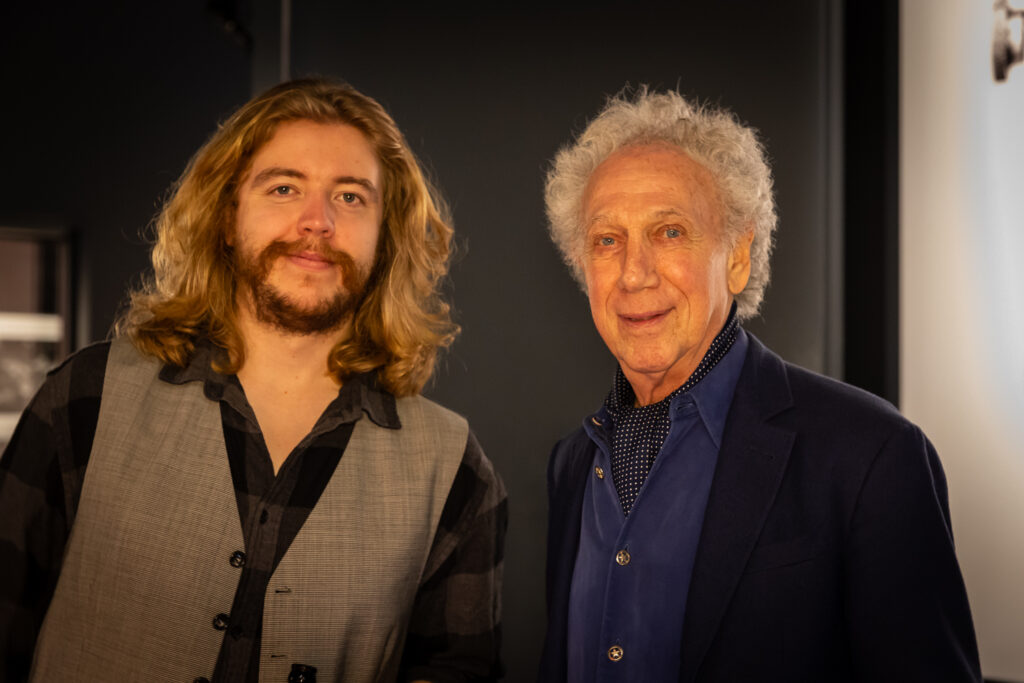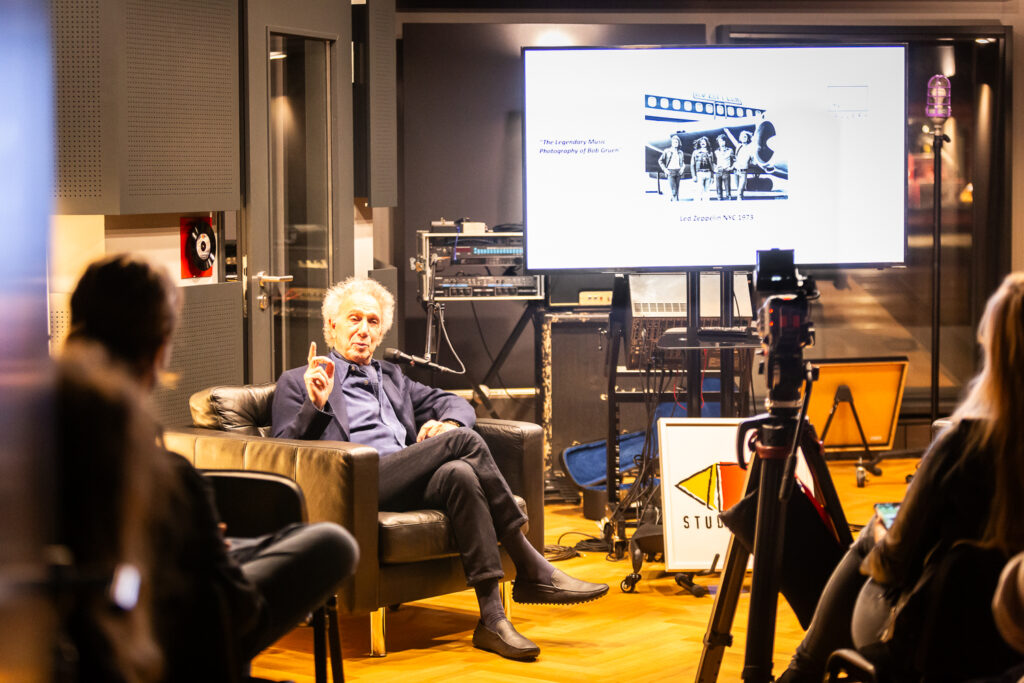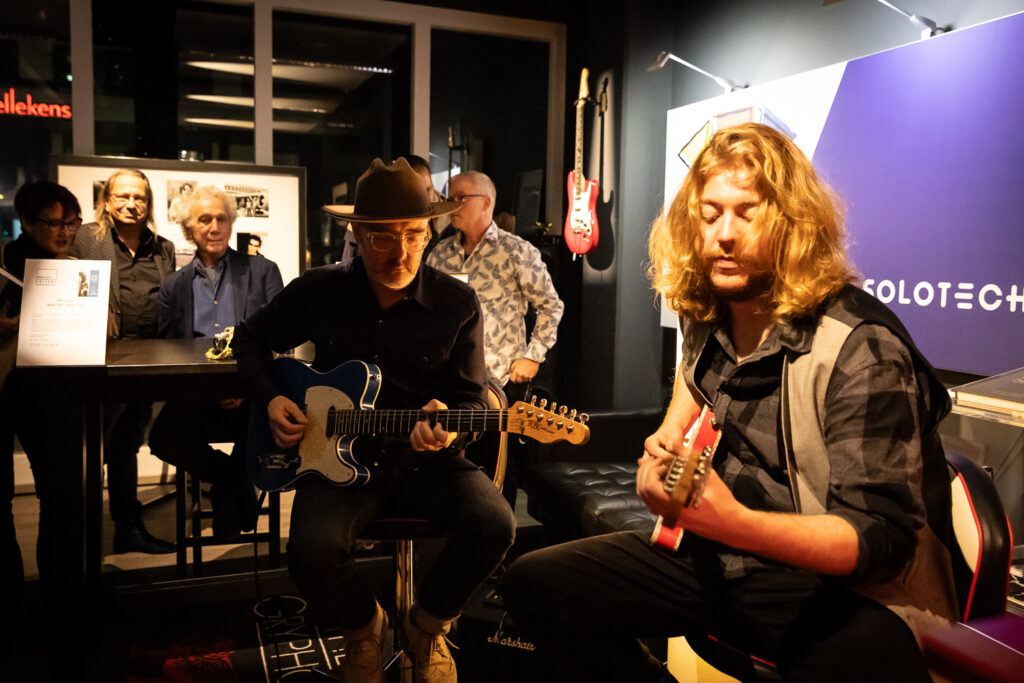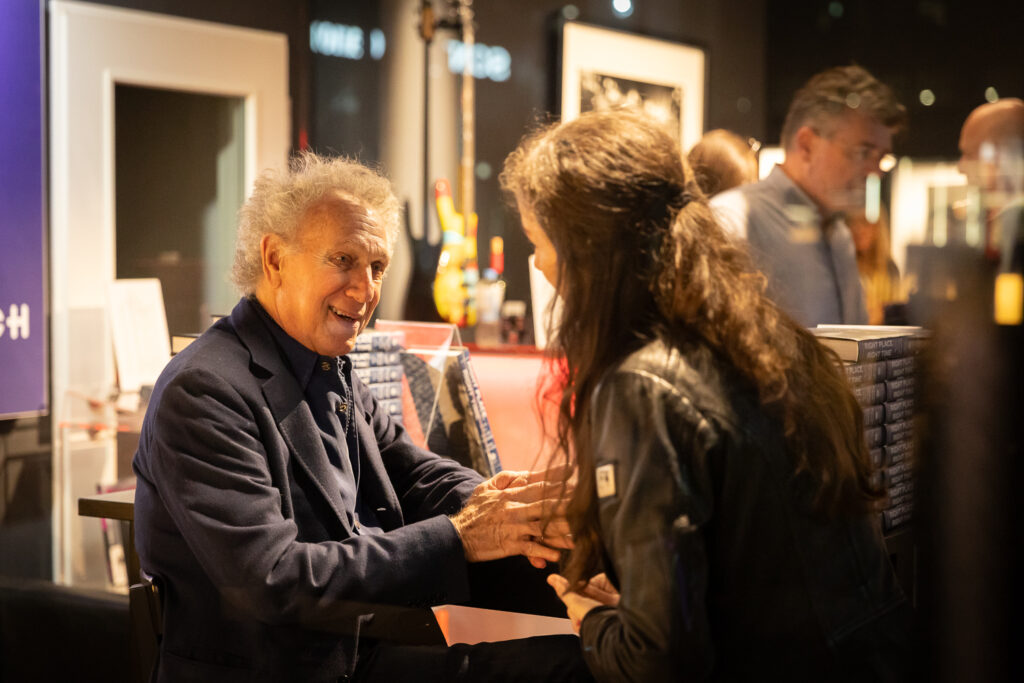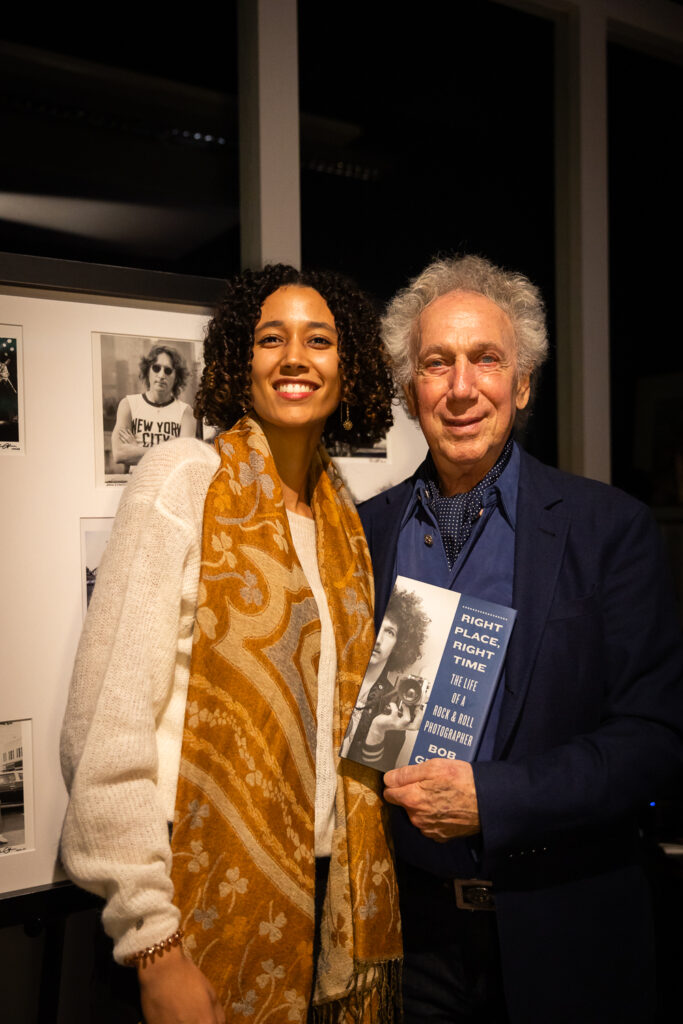
”An Evening with Bob Gruen”
Limelight Gallery - Showroom Frankfurt
26. Oktober 2023
On October 26, 2023, Limelight Gallery presented Bob Gruen and his music photography at its new location in the middle of Frankfurt. Our visitors experienced Bob Gruen Live in conversation with Dave Brolan, one of London’s most respected photo editors.
Bob Gruen is one of the most important photographers of his generation. His work is instantly recognisable, from John Lennon to Tina Turner to Led Zeppelin, Gruen was at the centre of rock ‘n’ roll and the transition to punk rock and the New York underground scene. Special moments featuring the Sex Pistols, Clash and Blondie have appeared worldwide in every form, on magazine covers, posters, t-shirts and even stamps.
He is the author of 15 books, including Rock Seen, John Lennon: The New York Years, Green Day: Photographs by Bob Gruen, and a new autobiography Right Place, Right Time.
On the occasion of his visit to the opening of the Limelight Gallery Frankfurt, we had the opportunity to meet Bob Gruen for an interview. The result is a very interesting conversation with some never-before-told anecdotes…!
The interview was conducted for us by Alex Gernandt, by the way himself a recognized music expert, author and long-time music journalist, among others for Spiegel, Bravo, Classic Rock and many more.
But read for yourself:
Bob, you came to Frankfurt to present your work at the Limelight Gallery. Your first visit to Germany?
Bob Gruen: No, I was in Berlin for the first time in the late 1970s and saw Bob Dylan and Elvis Costello live there. And in the 2000s I went to fashion fairs once or twice with my wife, who is a fashion designer. I find Germany very interesting. I like traveling and always discovering new things.
How did the collaboration with Limelight Gallery come about?
About my connection to entrepreneur Ralph Wezorke (Lightpower), who has a huge private collection of photographs, including many images from my archive. Some of them are exhibited here in the Limelight Gallery Frankfurt, and they will also be on display in the showroom in Paderborn and offered for sale in the future.
The Limelight Gallery is integrated into Studios 301 Germany. Music and photography are combined here under the motto “The Art Of Rock’n’Roll”… A perfect combination. Here they make music and show pictures that, in the best case, inspire people.
You have photographed many of the greatest and most famous artists in rock ‘n’ roll history.
Here at Limelight Gallery we have images of them all, from Bob Dylan, John Lennon, Led Zeppelin to AC/DC, The Clash, the Sex Pistols, Tina Turner, Suzi Quatro, Blondie, Joan Jett and Prince. They all always bring back wonderful memories for me.
You are a true New Yorker. You were born in October 1945 in the Big Apple…
…and by the way, the day after I was born, the United Nations was founded!
Isn’t it great luck to grow up in this great city that plays such an important role in pop culture?
Absolutely! Of course, it helps enormously to be in the right place at the right time. And that was the case in New York in the ’60s and ’70s, with all the bands and clubs like CBGBs or Max’ Kansas City. That’s why I called my autobiography “Right Place, Right Time”. It’s the story of my life. But in addition to being lucky, you also have to do the right thing and make things happen yourself. Passion, ambition, talent and skills also play an important role in a career.
Your last name Gruen suggests German roots…
Our original family name was Gruenwald, which was shortened to Gruen in the USA. This was common with immigration back then. My family is actually of Hungarian origin. My mother came to America by ship when she was eight years old and landed directly at the Statue of Liberty in New York.
Is it true that it was your mother who first inspired your passion for photography?
That’s correct. I learned photography from her. She was a lawyer by profession, but her hobby was photography. She enjoyed taking photos on various occasions and then developing them herself. When I was five years old, I still remember it well, she had a darkroom set up in our house and we developed her pictures together. She taught me everything, including all the technology. I became very interested in photography.
Do you still remember your very first camera?
Clear. My mum gave me a simple Kodak Brownie Hawkeye. I immediately started taking photos with it. When I was eleven years old, I photographed a play at a school summer camp called “Oklahoma.” I sent the color film home to my mother, who developed it and sent the prints back to camp. I then sold the pictures there. So I’ve been doing this job since I was eleven years old. Except that at some point my mother stopped developing my pictures (laughs).
Have you dreamed of becoming a professional photographer? Or was another career in sight?
Photography was the only thing that interested me. Apparently they tried to get me an office job. It did not work. A nine to five job was not my world. I prefer to work from five in the evening to nine in the morning. I was living with a rock ‘n’ roll band at the time, and whenever they changed the drummer, they needed a new band photo. So I started taking photos for her. Then a record company hired me to take photos of another band, it was Tommy James & the Shondells with the hit “Crimson And Clover”.
The summer of 1965 must have had a special meaning for you!
Yes, the popular Newport Folk Festival took place there. I wasn’t a professional photographer back then. Because I didn’t have any money for a concert ticket, I had my mother write a fake letter to the organizers to request a press photo pass. That surprisingly worked. And so I took a few pictures with my camera and the Newport Folk Festival became the first concert at which I took photos. Also by Bob Dylan, who performed there with the electric guitar for the first time and was heavily criticized for it. It was thought that he was betraying acoustic folk music. I think Bob Dylan wanted to show that rock and roll is the folk music of America.
Were you also infected with the “Rock’n’Roll virus” early on!?
And how! In the mid-fifties I saw Elvis Presley – eight years before The Beatles – on television on the Ed Sullivan Show. I remember it well and wondering what the hell Elvis was doing. I was a big fan. And later it continued with the Beatles, and then of course there was Chuck Berry and Bo Diddley, the Shirelles and the Shangri-Las. But the Beatles were the greatest. Everyone loved The Beatles because they were more than just music.
Later you even worked very closely with a Beatle…
I can even say that I was friends with John Lennon. I still am today with Yoko Ono.
How and where did you meet Lennon?
In the early seventies, when John Lennon and Yoko Ono moved to New York. They lived in Greenwich Village, right around the corner from my place. I had just taken photos of the Elephant’s Memory Band, with whom they later worked together (with their Plastic Ono Band). John saw my pictures, liked them and I eventually became his personal photographer and took thousands of photos.
Including the famous picture on a rooftop of him wearing the “New York City” T-shirt.
That was 1973. The shirt was mine. I had recently cut off the sleeves myself with a pocket knife to make it look cooler, more New York-like. A lot of people did that here back then. John wore it on the shoot and used one of the images on the cover of his album “Sometime in New York City”.
What were John and Yoko like?
There was always a lot of laughter when you met them because John just loved telling jokes. You couldn’t get along with Lennon without a sense of humor. Yoko is usually quite serious because she takes all of life very seriously. But in private, Yoko was often just as funny as John. It’s hard to believe. It was always fun hanging out with them.
Many Beatles fans still believe that Yoko broke up the band.
That’s certainly not true. The Beatles were big boys, four self-confident individuals who wouldn’t have let anyone tell them anything or pressure them into a decision they didn’t support. Yoko is not to blame. There are still a lot of misunderstandings about her today because she is an avant-garde artist and many people simply don’t understand her type of art.
Her pictures usually show artists in action on stage or in very special situations. Are you not into studio photography?
It depends on. I mean, some people are very creative in the studio. But I find studio work quite limiting. It is more challenging to quickly transform an everyday situation “into a studio” and spontaneously create a good background, good lighting and good expression. If I can do that, I’ll be much happier because I’ve mastered something difficult. Spontaneous photos are also much more intimate. It’s not just the guys on stage, it’s always the rock’n’roll lifestyle that I capture in my pictures. The photos show people all over the world how exciting and colorful the New York party and rock’n’roll scene was. And a lot of people told me that’s why they moved to New York. I’m fascinated by the live atmosphere on stage and also by the special things: John Lennon in front of the Statue of Liberty, the Sex Pistols on a plane, the Ramones in the subway, KISS in the middle of 8th Avenue in Manhattan…
Were you also part of Andy Warhol’s “Factory” clique?
No not really. Of course I knew him; we met at the Mercer Arts Hotel, among other places. But Warhol never spoke much and was aloof. Mostly he just stood around and watched people. But through him I met the New York Dolls. An influential New York punk band that grew very close to my heart. I made video recordings for them for the first time back then – long before MTV existed.
Another highlight for you must have been the legendary Woodstock Festival in the summer of 1969.
That was it. I went to Woodstock as a fan of The Who, with my wife and a tent. You can also see pictures of it on my website bobgruen.com and find the story about my trip to Woodstock. It was one of the best experiences of my life, very liberating. I think rock and roll in general is about the ability and freedom to express yourself. What I’m trying to photograph is that moment of unbridled joy when everyone just screams “Yeeeahh!!” and no one thinks about the fact that you’ll soon have to pay your rent again. Everyone just screams “Yeeeaah!!” and lets their emotions flow. For me, that’s what rock’n’roll is all about. And that’s exactly how it was back then on the rainy meadow in Woodstock, with Sly and the Family Stone, Joe Cocker and The Who. Everyone screamed “Yeeeaah!!”. It was a moment of freedom.
Your archive includes photographs from a good six decades. Do you still take photos regularly these days?
No, not so often anymore, and not at all at concerts anymore! Last year I worked with the young Italian band Måneskin when they came to New York for the first time after winning the Eurovision Song Contest. They told me that they grew up with my pictures of their favorite bands and were keen to hire me for a photo session. So I took them on a sightseeing tour to show them “my New York”. We had lots of fun. I also recently did a photo session with Nile Rodgers.
How do you feel about digital photography?
That’s not my thing. People these days go to a concert, take photos, post them within seconds and the whole world can see it. Today I find it more fun to show my pictures at exhibitions like I do now in Frankfurt. You can also buy prints of my pictures there, which is a good investment. I’m noticing a trend towards investing in art – because you get more out of it than, say, stocks. When you buy stocks, you basically just put them in a drawer and take them out. On the other hand, if you buy a nice photo, you can hang it on the wall and enjoy it. Every day.
